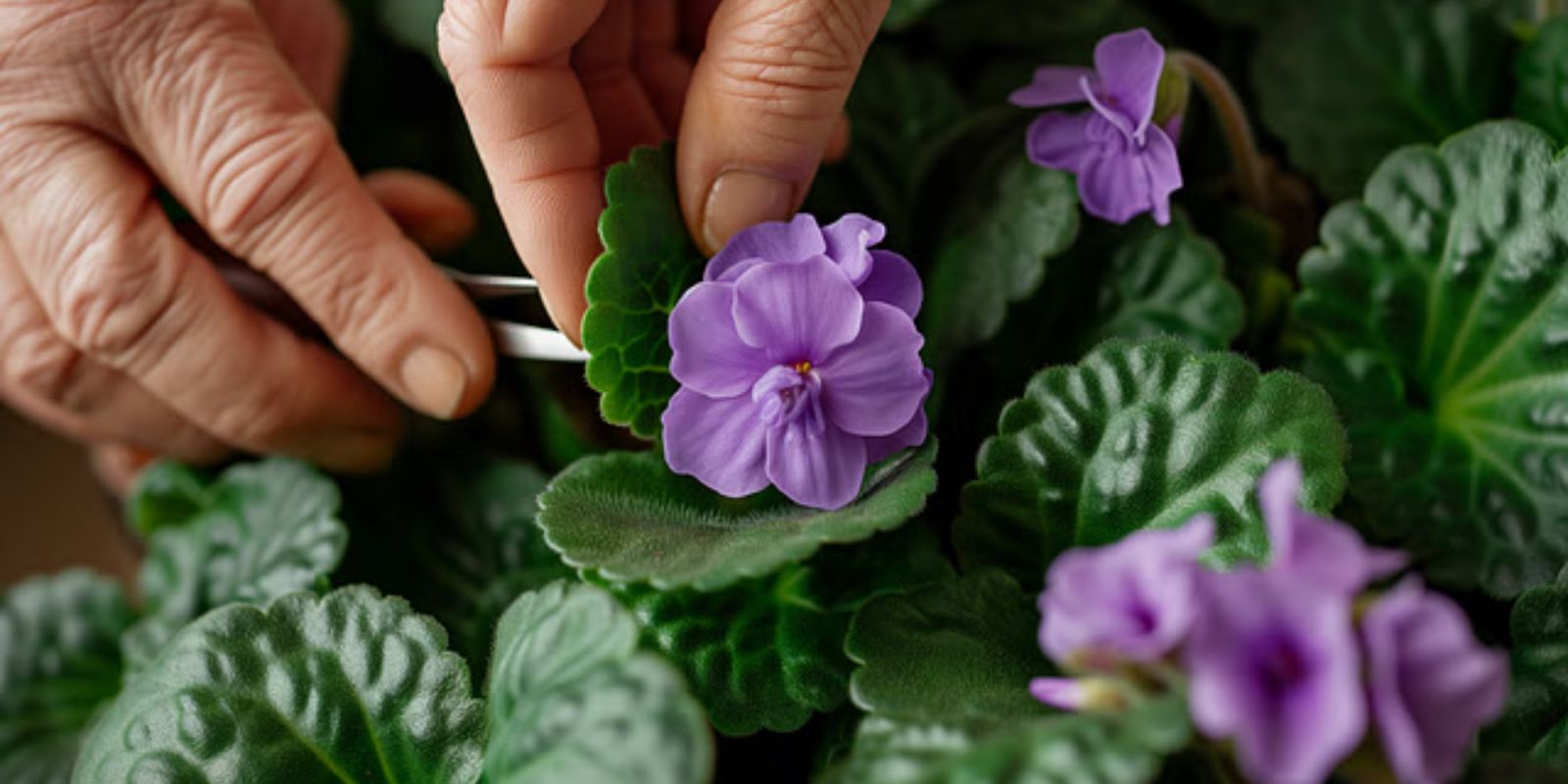African violets (Saintpaulia) are treasured indoor plants known for their velvety leaves and delicate blooms in a variety of colors. While they are popular among plant enthusiasts, many find it challenging to coax these beauties into blooming abundantly. Fortunately, with the right care and a bit of attention to detail, African violets can reward you with a constant display of vibrant flowers.
In this comprehensive guide, we’ll unveil the secrets to making African violets bloom profusely, ensuring they become the centerpiece of your indoor garden.
1. The Right Light for Flourishing Flowers
African violets thrive in bright, indirect light. Direct sunlight can scorch their sensitive leaves, while insufficient light may lead to weak growth and lack of blooms.
Tips for Optimal Lighting:
- Natural Light: Place the plants near an east or north-facing window for soft, filtered sunlight.
- Artificial Light: If natural light is inadequate, use fluorescent grow lights or LED plant lights positioned 12–15 inches above the plant. Keep the lights on for 12–14 hours daily for consistent results.
- Rotating the Plant: Turn the pot every few days to ensure even exposure and symmetrical growth.
2. The Perfect Temperature and Humidity
African violets prefer stable conditions, much like their native tropical environments. Fluctuations in temperature and humidity can stress the plant, hindering flowering.
Create the Ideal Environment:
- Maintain temperatures between 65–75°F (18–24°C), avoiding drafts or sudden changes.
- Increase humidity levels to 50–60%, especially in dry climates, by:
- Placing a tray of water with pebbles near the plant.
- Using a room humidifier.
- Grouping plants together to create a microclimate.
3. Mastering the Art of Watering
Improper watering is one of the most common reasons African violets fail to bloom. Both overwatering and underwatering can cause stress, while wet leaves can lead to fungal infections.
Watering Tips:
- Bottom Watering: Place the pot in a shallow dish of lukewarm water and let the soil soak up moisture through the drainage holes. Remove the pot after 30 minutes.
- Water Quality: Use room-temperature, filtered, or distilled water to avoid mineral buildup.
- Frequency: Allow the topsoil to dry slightly before the next watering, typically every 5–7 days depending on humidity and temperature.
4. Feeding for Flourishing Blooms
African violets are moderate feeders, and a regular dose of nutrients ensures they have the energy to produce flowers.
Fertilizing Tips:
- Use a balanced water-soluble fertilizer (such as 10-10-10 or 14-12-14) designed for African violets.
- Fertilize every 2–4 weeks during active growth periods. Reduce feeding in the winter when growth slows.
- Avoid over-fertilizing, as excessive nutrients can lead to salt buildup, leaf burn, or reduced flowering.
5. Choosing the Right Soil and Pot
The correct soil and container play a significant role in African violets’ health and flowering potential.
Potting Tips:
- Use a light, well-draining soil mix specifically formulated for African violets or make your own using equal parts peat moss, perlite, and vermiculite.
- Repot annually to refresh the soil and provide the roots with a nutrient-rich environment.
- Select a small pot just slightly larger than the root ball, as African violets prefer slightly crowded conditions for blooming.
6. Pruning and Maintenance for Bloom Boosting
Regular maintenance keeps African violets healthy and encourages flower production.
Simple Maintenance Tips:
- Remove spent blooms and yellowing leaves promptly to direct energy to new growth and flowers.
- Trim off suckers (small side shoots) that compete with the main crown for nutrients.
- Inspect the plant regularly for pests like thrips or mealybugs and address infestations immediately with insecticidal soap or neem oil.
7. Tricks to Encourage Reluctant Bloomers
If your African violet refuses to bloom despite proper care, try these expert techniques:
- Increase Light Intensity: Ensure the plant is getting sufficient indirect light, and consider moving it closer to the light source.
- Introduce a Bloom Booster: Switch to a fertilizer with a higher phosphorus content (like 10-30-20) to stimulate flower development.
- Adjust Day and Night Temps: A slight drop in nighttime temperatures (around 60°F or 16°C) can encourage flowering.
8. Common Mistakes to Avoid
1. Overwatering
Soggy soil leads to root rot, the most common killer of African violets.
2. Direct Sunlight
Strong sunlight burns the leaves and inhibits blooming.
3. Using the Wrong Pot
Oversized pots can prevent flowering as the plant focuses on root development instead of blooms.
4. Neglecting Leaf Dusting
Dust on leaves reduces photosynthesis; gently clean leaves with a soft brush or damp cloth.
Benefits of African Violet Care Beyond Beauty
- Air Purification
African violets improve indoor air quality, making your home healthier. - Stress Relief
Caring for these beautiful plants can be therapeutic, boosting mental well-being. - Aesthetic Appeal
The vibrant blooms add elegance and charm to any indoor space.
FAQs About African Violet Care
Q: How long does it take for African violets to bloom?
With proper care, African violets can bloom in 8–10 weeks and continue flowering for months.
Q: Can African violets bloom year-round?
Yes! With consistent care and optimal conditions, they can produce flowers throughout the year.
Q: How do I propagate African violets?
You can propagate African violets through leaf cuttings. Place a healthy leaf in moist soil or water, and it will develop roots in 4–6 weeks.
Conclusion: Let Your African Violets Shine
African violets may have a reputation for being finicky, but with the right knowledge and care, they are surprisingly rewarding plants. By following these steps and paying attention to their needs, you can transform your African violets into prolific bloomers that light up your indoor garden.
🌟 Have you tried these tips? Share your success stories and photos of your blooming African violets below!

